First Impressions
As we gear up for the fall semester, students (and maybe faculty) will be feeling nervous, excited, impatient, and more. Classrooms are never purely intellectual spaces, but instead are fraught with emotion that can either hinder or ignite the learning process (Cavanagh, 2016).
If the first day of class is just an administrative day, packed with policies, logistics, standards, etc., we miss our best opportunity to shape how students feel about the learning they’ll be doing. We’ll be off to a better start if we can provoke wonderment, stir curiosity, and foster a sense of belonging.
So how can you make this happen on the first day? Here are a few practical strategies:
Introduce your students to the “big questions” your course will answer. What makes something alive? Why do some people have power when others don’t? How can we use language to enlighten or persuade? Humans are curious animals: revealing gaps in our knowledge often provokes us to fill them in.
Get students interacting with each other. Students often feel isolated in their classes. First-year students in particular may experience the university only in huge classrooms, where they never speak. Chamblis and Takacs (2014) insist that a sense of social connectedness is a prerequisite for learning. The first day, when students will be most open to a new experience, is an ideal time to start building a sense of community. Asking students to complete some tasks in groups or pairs, right from the start, will habituate them to collaborating and working actively.
Convey confidence in their ability to succeed. Especially if your course has a reputation as intimidating, you may need to assuage students’ anxieties. You need to communicate high expectations and confidence that students can meet them. Then you can show them how you’ve designed the course to support their learning, with plenty of opportunities for practice and feedback, and you can steer them toward resources that will help them learn.
Humanize yourself. It’s often difficult for us to understand how intimidating we may seem to students. Students learn more when they trust their instructors, however (Arum and Roksa, 2011), so we should work actively to build immediacy. You don’t have to get overly personal: just explaining how you fell in love with your field can be pretty endearing. It’s even more important to show that you care about your students and their learning, so welcoming them to your course, encouraging them to visit you during office hours, and inviting their questions goes a long way.
Get to know your students. If your class is small enough, you can start learning names. Even if it’s not, you can learn a lot about who’s in the room. You can poll the class, using clickers or a tool like kahoot, to learn their interests, how far away their families live, how many languages they speak, or what prerequisites they’ve taken. You might want to find out what they already know about your discipline or subject, so you can help them build on this prior knowledge throughout the semester.
Whatever you do on the first day will set the tone for the rest of the semester, so this is your chance to rekindle the thrill of learning. We hope the first day is enjoyable for you and your students, and we wish you a happy start to a productive semester.
Fall 2018 Faculty Reading Groups
CAT’s faculty reading groups are a great chance to connect with colleagues from across the university, delve into the research on learning, and share practical strategies for making your classes even more effective. Each group will involve a series of three meetings, so please check your calendar to make sure you can attend. Click here to sign up, and we’ll send you your complimentary copy of the book. We look forward to working with you!
(Two of you signed up last week before we adjusted our survey link, and we lost your names. If you responded last Friday, please sign up again!)
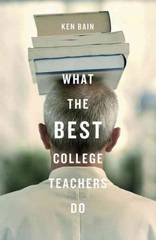 K. Bain, What the Best College Teachers Do
K. Bain, What the Best College Teachers Do
Wednesdays 10:00-12:00 – 9/19, 9/26, 10/3
Ken Bain wanted to know how some faculty manage to “make a sustained, substantial, and positive influence on how their students think, act, and feel.” How do some faculty consistently provoke deep learning, while the rest of us merely have good intentions? Bain conducted a fifteen-year study of a hundred extraordinarily effective teachers, to see how they help their students learn. The book traces how these exceptional teachers approach their subjects, their students, and the process of learning.
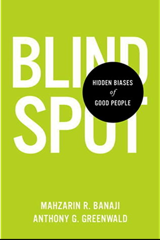 M.R. Banaji & A.G. Greenwald, Blind Spot
M.R. Banaji & A.G. Greenwald, Blind Spot
Tuesdays 2:00-4:00 – 10/2, 10/9, 10/16
Banaji and Greenwald’s book Blind Spot: Hidden Biases of Good People shares research from the Implicit Association Test, a method they co-developed to gauge “implicit bias.” Blind Spot explores the ways in which our unconscious, acculturated assumptions about social groups shape our reactions, behavior, and judgments about people’s character, abilities, and potential. NPR’s segment “What Does Modern Prejudice Look Like?” provides more details.
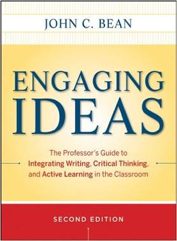 J.C. Bean, Engaging Ideas
J.C. Bean, Engaging Ideas
Mondays 2:00-4:00 – 10/8, 10/15, 10/22
The second edition of John Bean’s best-selling classic text Engaging Ideas will be the foundation of this reading group, in which we will discuss using writing as a mode of teaching and learning in any course. From formal writing projects to informal classroom exercises, we will explore the ways writing can be used to help students improve as critical thinkers and effective communicators. Then, we will make plans to apply strategies Bean describes to enhancing writing instruction in our own courses.
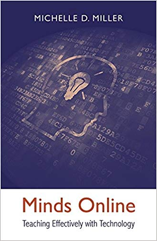 M.D. Miller, Minds Online
M.D. Miller, Minds Online
Wednesdays 2:00-4:00 – 10/17, 10/24, 10/31
This group will discuss Minds Online: Teaching Effectively with Technology by Michelle Miller. Minds Online is a concise, nontechnical guide for instructors who seek to advance learning through a sound scientific understanding of how the human brain assimilates knowledge. Drawing on the latest findings from neuroscience and cognitive psychology, Miller explores how attention, memory, and higher thought processes such as critical thinking and analytical reasoning can be enhanced through technology-aided approaches. Participants will discuss how to use multimedia effectively, how to take advantage of learners’ existing knowledge, and how to motivate students to do their best work.
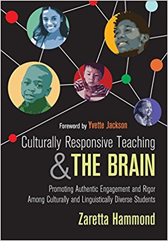 Z. Hammond, Culturally Responsive Teaching & the Brain
Z. Hammond, Culturally Responsive Teaching & the Brain
Wednesdays 10:00-12:00 – 10/24, 10/31, 11/7
Hammond’s book illuminates the connections between culture, the brain, and learning. We usually think of neuroscience and the study of culture as wholly separate spheres, but Hammond reveals the biological basis of culturally-responsive teaching. The brain makes far more neural connections in response to the proper stimulation, so we can exponentially enhance our teaching by finding ways to make our content and approaches relevant to students’ lives, values, and ways of knowing. The book offers strategies for building “learning partnerships,” and for understanding and connecting to students to enhance their learning. Participants will develop plans for implementing these strategies in their own classes.



